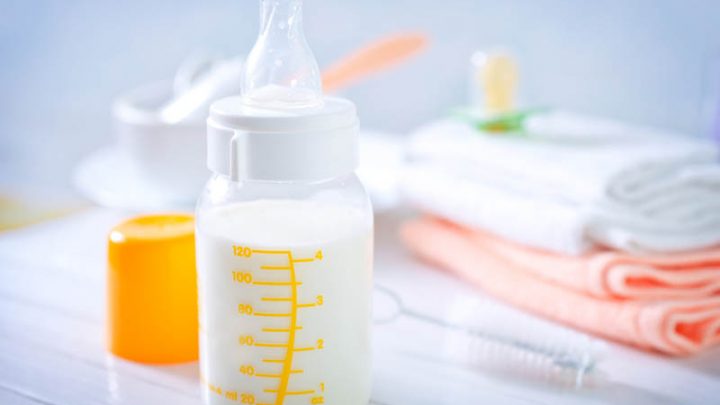Breastfeeding or not, you’re bound to have at least two baby bottles in your house.
They are on every baby registry checklist, and we buy them before the baby even arrives.
Bottles come in different shapes, sizes, and materials, but they all have one thing in common, which is the expiration date.
It is very important to know how long do baby bottles last to keep your baby safe.
You wash them several times every day, and as you become a bottle expert, you will start to notice discoloration or scratches inside the bottle, mostly from the bottle brush.
Even though I am sure you clean your baby’s bottles thoroughly, that doesn’t mean they don’t need to be replaced eventually.
There are many signs that will let you know when to replace your baby’s bottles and it’s very important to notice them in time.
How Long Do Baby Bottles Last?
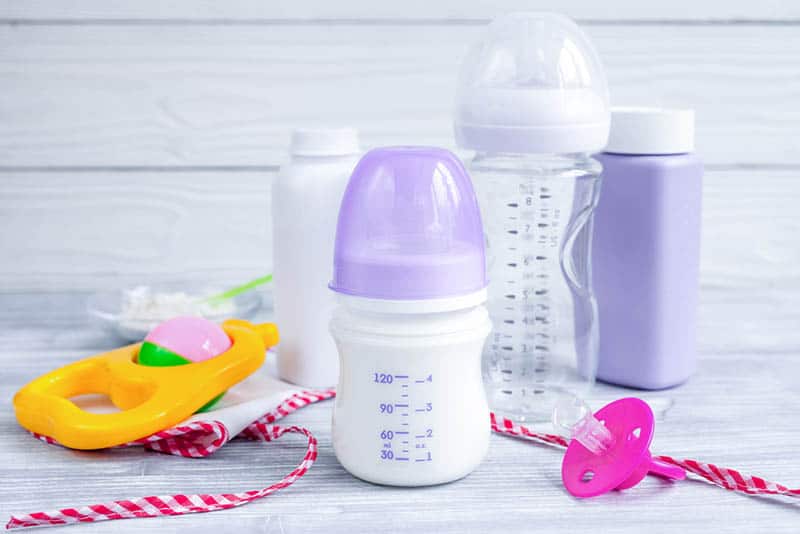
We all want to take the best care of our children’s health as possible, which is why we invest so much time cleaning everything our little ones come into contact with, but most of us don’t think about how long do baby bottles last.
Unfortunately, baby bottles are one of the most neglected items, even though you wash and sanitize them several times every day.
The baby bottle is a must-have baby product, but there are several precautions that should be taken into consideration when using one.
The general rule of thumb is to throw out baby bottles older than six months, whether they’re glass or plastic.
It may seem like glass bottles are more durable, as they can be washed in hot water, but that doesn’t extend the bottle’s lifespan.
BPA-free plastic bottles can be treated the same way, even though some argue that BPA-free bottles release unwanted chemicals when heated, even though this is far less than BPA (bisphenol A) products.
Even though the Food and Drug Administration (FDA) banned BPA from baby products like sippy cups and baby bottles, there are still a lot of products that contain this harmful compound.
If you have this type of bottle it should be replaced after 2-3 months of use, and I sincerely recommend you switch to BPA-free or glass bottles instead.
Price is an important factor for many parents when they shop for baby bottles, but there are several affordable non-toxic plastic and glass baby bottles that are completely safe for your baby.
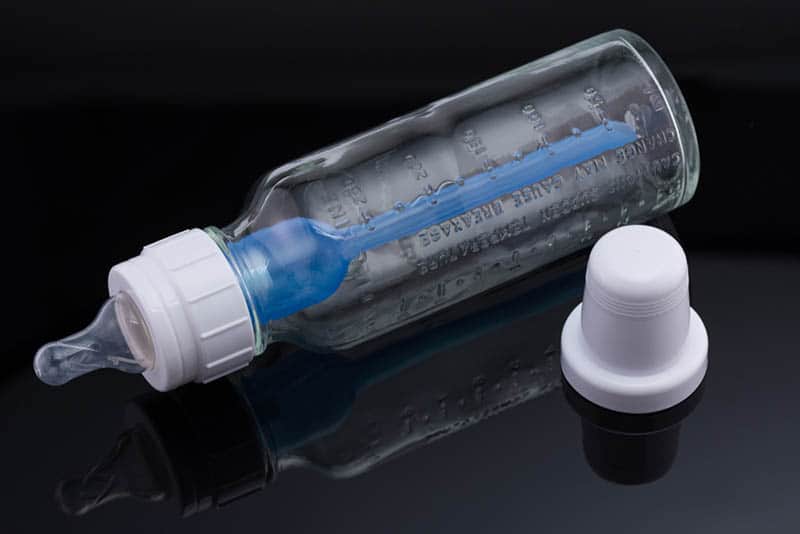
On the other hand, every material deteriorates over time, whether it’s plastic or glass, which is why it can be tricky to reuse old baby bottles.
You can easily detect this simply by noticing how the bottle color changes and becomes a bit cloudy or yellowish.
Discoloration can be caused by several factors, and the most common are tap water, fat from breast milk or formula, and sterilization.
Tap water is not 100% clear, as it can contain small particles of water pipe materials or dirt.
These particles are harmless to humans, but they do leave traces on the things we wash with them.
Breast milk and infant formula both contain fats that are crucial for your baby’s health and development, but they do leave traces on the bottle no matter how much you wash them.
As time passes, your baby’s bottles will turn from transparent to yellow, which is a definite sign to replace the bottle right away.
Even though sterilizers for bottles are used to keep bottles clean from bacteria, fungi, and viruses, they also shorten the lifespan of the bottle.
When you wash bottles you expose them to strong soap, even if you use infant-safe dish soap, which changes the structure of the bottle’s material.
This actually happens to all dishes, especially those washed in the dishwasher.
This is a natural process and it does not mean that you shouldn’t sterilize your baby’s bottles.
The Centers for Disease Control and Prevention (CDC) state that sterilization is crucial for the health of all babies, especially those younger than 3 months, who have a weak immune system, or have been born prematurely.
Some parents think glass bottles are a better solution than plastic bottles, primarily because they are heat-resistant and do not leak any chemicals into the baby’s food or water.
However, they are not completely harmless. Glass bottles can break and the small pieces of shattered glass could cause serious injury to your baby.
Some brands have found a way to resolve this problem by adding silicone sleeves.
This protects your baby and the bottle at the same time. Silicone doesn’t prolong the lifespan of the bottle, though, it only serves as additional protection.
How Long Do Bottle Nipples Last?
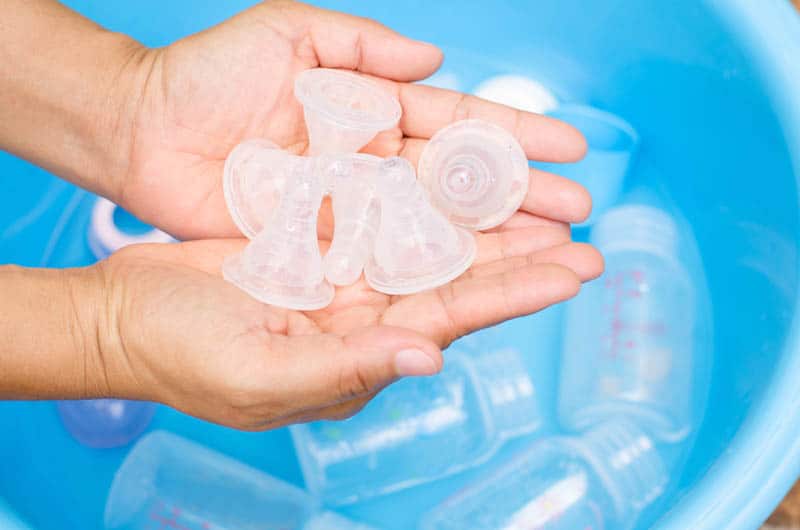
Baby bottles can last up to six months, but this does not apply to bottle nipples.
Teats should be replaced much more often than the body of the bottle, after 1-2 months of use.
Nipples are more sensitive than bottles and are the most used part of it, as the baby constantly sucks and chews on them.
Teats have to be thoroughly checked before every use for tears, changes in color, thinning, or any other damage that could harm your little one.
Silicone nipples are usually stretchy and durable, but they wear out over time. Switching between nipples frequently could make them last a bit longer, but only for a few weeks at most.
Nipple sterilizing is also very important, even though it might wear the teats out a bit faster.
Many people think that a baby’s saliva contains bacteria that can harm them, but that is not true unless you give your baby a bottle of prepared powdered formula that was left out for longer than an hour after your baby first started drinking from it, for example.
Sometimes, the formula can stay within the bottle nipple even if you wash it, so to be sure it won’t affect your baby, I always recommend sterilization.
If the material becomes sticky, or you see any signs of wear and tear, there is no need to wait for two months. Replace it straight away to keep your child safe.
What about breast pumps?
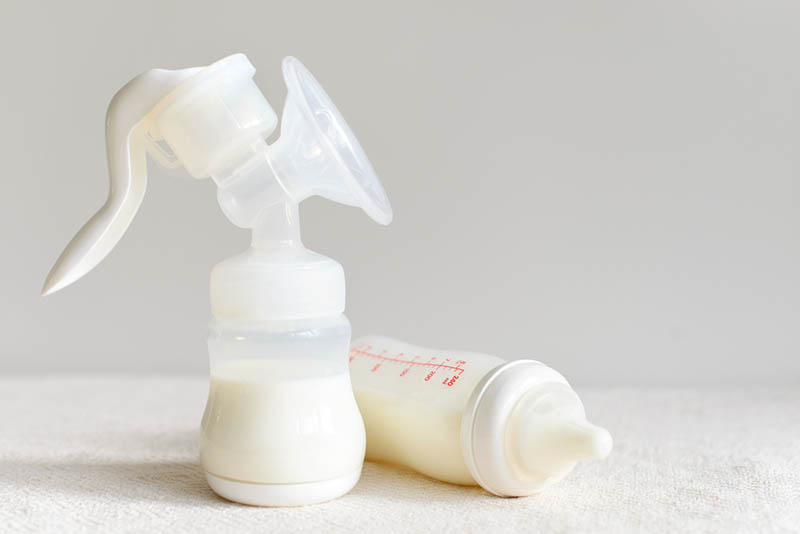
Bottle cleaning is an essential part of proper care for your baby, but what about breast pumps?
Now that you know how long do baby bottles last, we can talk about one of the most important parts of bottle-feeding for breastfed babies.
The best breast pumps can last between several months and several years, depending on the manufacturer and quality of the pump parts.
Some models come with their own storage containers for milk that can be used as a baby bottle as well.
Remember, the same rule about replacement goes for these bottles, even if you don’t use them as often as other baby bottles.
The breast pump should be cleaned appropriately as well and sterilized, as the milk you pump goes through it first before ending up in the bottle.
RELATED: Breast Pumping Gear: 11 Absolute Essentials for Pumping Moms
Conclusion
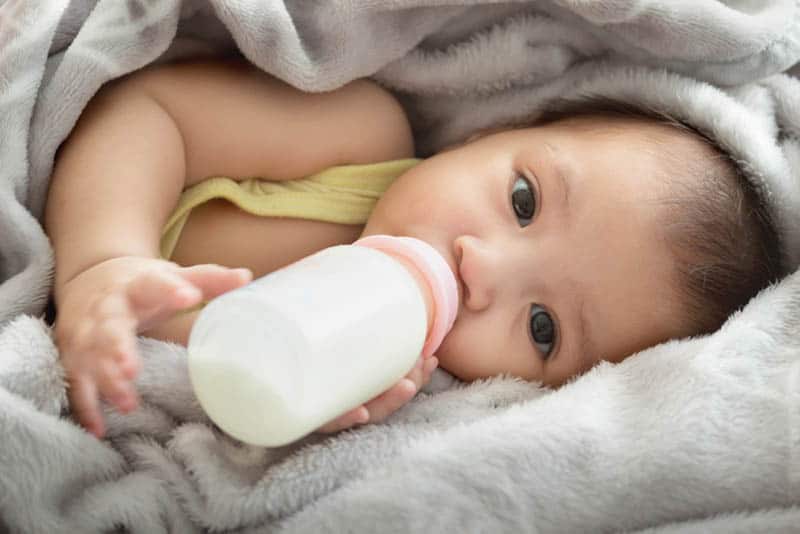
Breast or formula feeding, glass or plastic, long or short.
None of these characteristics influence the lifespan of your baby’s bottles.
While bottle nipples should be replaced every 1-2 months, the body of the bottle can last up to six months, but not a day longer than that.
Even though most manufacturers don’t specifically state how long do baby bottles last, general guidelines usually range between 3-6 months, depending on the state of the bottle.
Bottles should always be washed immediately after feeding your baby, and the milk should never be left at room temperature for over one hour.
This can shorten the lifespan of the bottle and cause bacteria that could harm your baby.
Soapy water can help you clean all parts of the bottle and breast pump, but make sure not to leave it there for too long as strong dish soaps may affect the durability of bottle materials.
Also, wash bottles with warm water rather than hot, especially when it comes to plastic bottles, to prevent any changes in structure and chemical leaching.
Note: The information stated in this article is for educational purposes only.
It does not represent an alternative to medical advice.
If you have any concerns, you should contact a pediatrician, physician, or any other adequate medical staff.
References:
• Centers for Disease Control and Prevention. (N.D.). How to Clean, Sanitize, and Store Infant Feeding Items. CDC website.
• U.S. Food & Drug Administration. (2018, June 27). Bisphenol A (BPA): Use in Food Contact Application. FDA website.
Like this post? Please share or pin it for later. You can also stay in the loop and follow us on Facebook, Instagram or Pinterest.
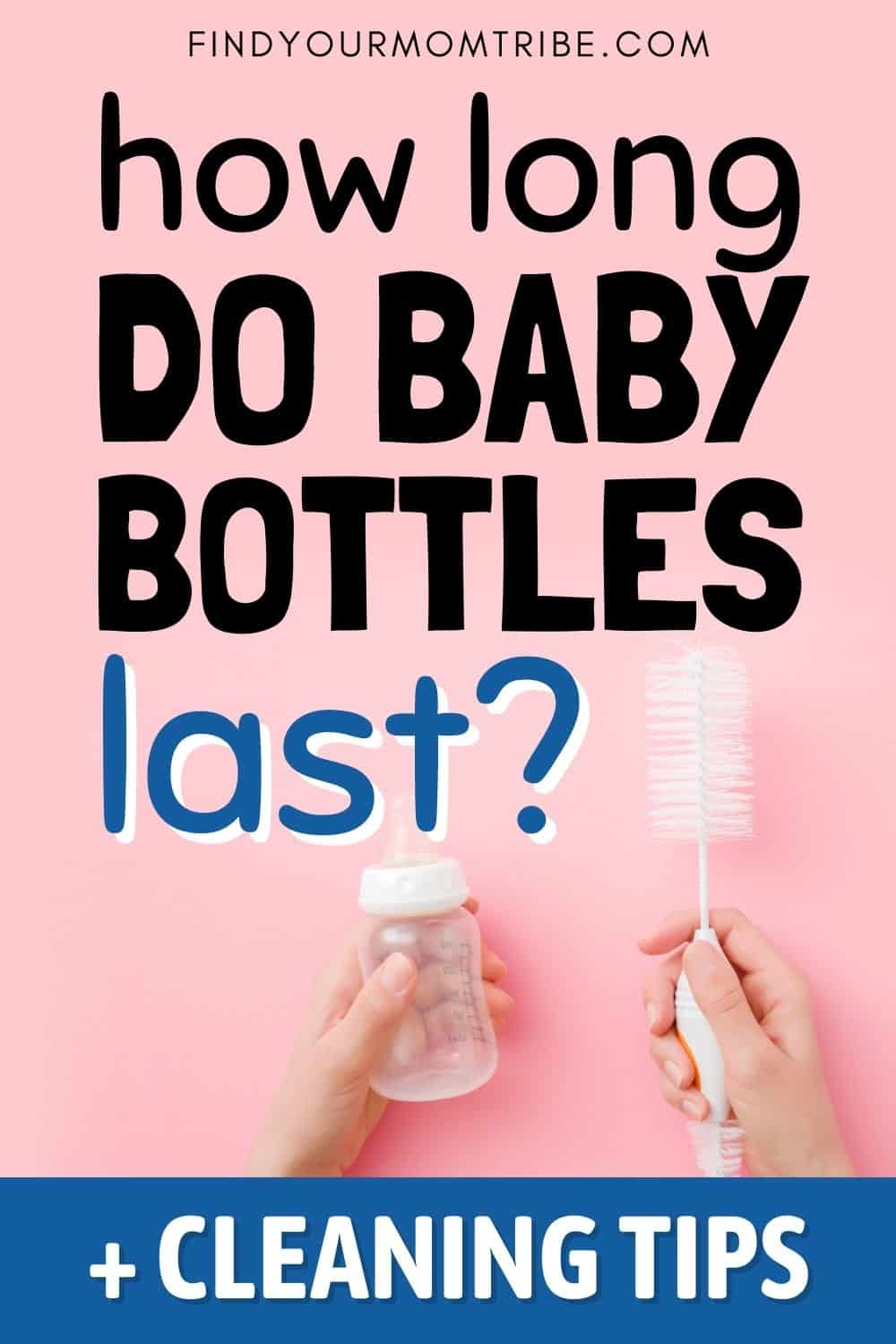
We love honesty! Find Your Mom Tribe is an Amazon Associate and we earn from qualifying purchases through affiliate links at no extra cost to you. Please see our full Amazon Affiliate disclosure for more information.

